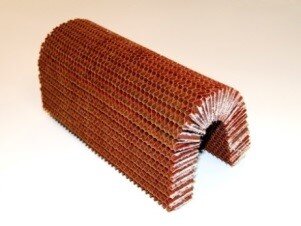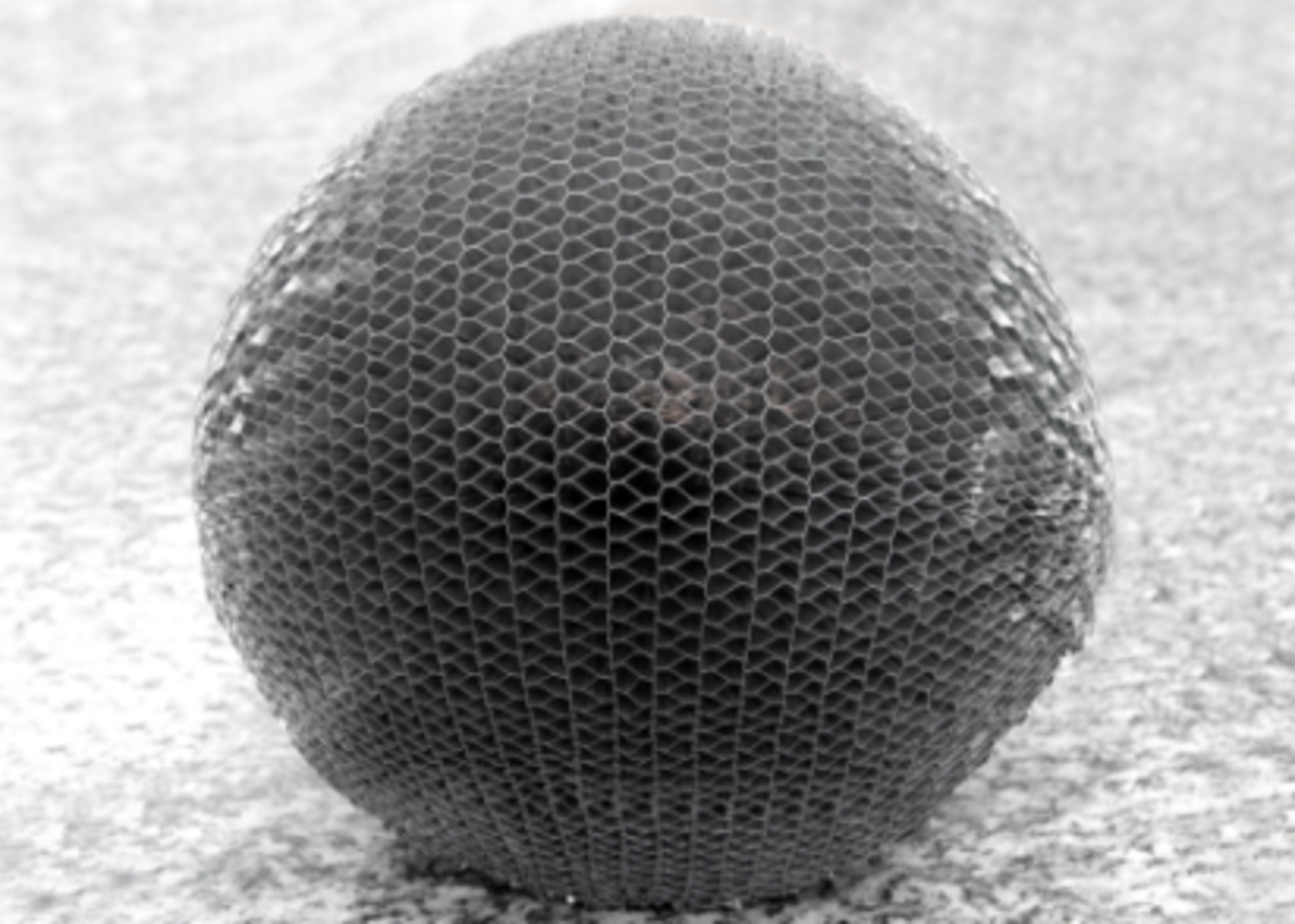Distorting honeycombs
Attempting to make very strong, stable structures using only lightweight materials is an ongoing challenge for space technologies. Often, this is solved by sandwiching two sheets of CFRP skin together with a honeycomb in-between. This makes for an incredibly structurally hard to bend sheet of material, that’s still light in weight. But using this kind of construction complicates the use of designs with doubly-curved or more complex shapes – the construction’s biggest pro, the sheet’s rigidity, becomes its biggest drawback as the manufacturing process is complex
A GSTP activity based in Luxembourg has, for the first time in Europe, designed a sandwich structure material using a 3D honeycomb that can be formed more efficiently and at reduced manufacturing cost into multiple shapes. In addition, it promises more flexibility to the designer in terms of geometry that can be realised using sandwich panels.

The construction was incredibly simple, as the activity turned the honeycomb hexagon core between two sheets of quartz fibre into small, flattened polygons, similar to childlike house shapes. These non-hexagonal geometries can be bent in multiple direction without suffering a significant loss of their mechanical stability.
“Currently, to manufacture these curved structures you have to cut and splice them, so the new design options offered by 3D Honeycomb will make manufacturing of mirrors, nose cones and fairings far simpler, faster and cheaper,” explains Hermann Fischer, the technical officer for the project. “It will also open a wide variety of design options in the future.”
The activity also determined which material was best for structure, and determined that from a variety of Space-grade aluminium, E-glass, Quartz, Kevlar and other options that quartz fibre gave the structure the lightest weight with the most strength and cost trade-off for an antenna reflector whereas for a launcher structure a 3D aluminium core seems most suitable.
Two applications, a reflector and a launcher structure, are studied in detail. After manufacturing trials, a number of tests typical for Space, such as dimensional accuracy, strength, thermal and acoustic properties will be conducted to show the benefits and limitations of the newly developed 3D honeycomb.


